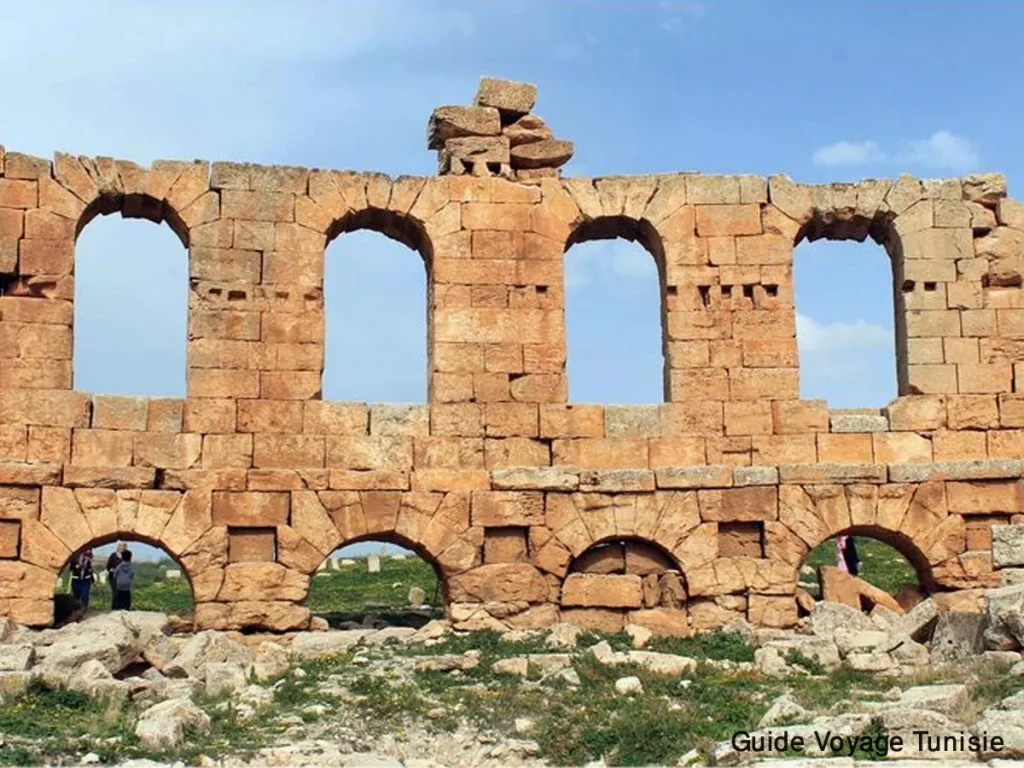Archaeological Museum of El Jem
The Archaeological Museum of El Jem is located in the city of El Jem, Tunisia. It is housed in a former Roman amphitheater, one of the best-preserved examples of its kind in the world. The museum showcases a collection of artifacts and exhibits related to the ancient city of Thysdrus, including mosaics, sculptures, and other artworks.
It provides visitors with a glimpse into the rich cultural heritage of the region.
It also offers insights into the daily life and customs of the Roman era.
It is considered an important cultural and historical site in Tunisia and is a popular tourist destination.
The museum is accessible on presentation of the entrance ticket to the amphitheater.
In a very didactic presentation, it includes an important collection of Roman mosaics, covering a period from the 2nd century to the 5th century, which brings together a good part of the pieces discovered in the city, a certain number of others being preserved in the museums of Sousse and especially Bardo.
Located away from the tourist circuits, the archaeological museum of El Jem is really worth the detour. It is served by a calm atmosphere and a successful museography. Well preserved, the huge mosaics deliver their colors intact in the subdued daylight. They come from the excavations of ancient Thysdrus. The museum has recently doubled in size and shows mosaics never before exhibited.
Mosaics and daily life scenes
There are also many mosaics with geometric ornaments or figurative scenes, with in particular scenes of wild animals, hunting scenes but also scenes of wild life, including two mosaics found during excavations carried out at the “house of the Dionysian procession”: tiger attacking two onagers and lions devouring a boar. These representations of daily life are typical of African mosaics. The fawns are treated with rich colors and subtle gradations; however the cohesion of the decor and the animals is awkward.
The museum and its surroundings
Specialists recommend visiting this museum before visiting the other remains of the ancient city of Thysdrus – today, El Jem –. It is because this space collects many architectural elements that went into the decoration of the sumptuous residences and public buildings of Thysdritan, in particular, the dazzling mosaic floors, certainly among the most beautiful of Roman antiquity.
The museum was built on the site of a Roman villa whose spatial organization it restores: a central courtyard surrounded by a peristyle – courtyard – which gives access to the rooms. There are exhibited objects – sculptures, mosaic paintings, ceramics, etc. – from excavation campaigns carried out at Thysdrus as well as in the vicinity of the city.
Recently, this space has been enriched by a new wing which very eloquently illustrates the richness and diversity of the craftsmanship of the Roman era.
The museum gives direct access to an “archaeological park” including the remains of the so-called villa of the peacock and of Sollertiana, a superb patrician residence which has preserved many of its mosaic floors in situ. In the same area, a life-size reconstruction of the “House of Africa” was carried out, a sumptuous aristocratic residence built around the 170s AD. accidentally discovered in the 1990s and which takes its name from two mosaic paintings featuring, in their central medallion, one the goddess Africa, the other the province of Africa, the only known representations of the African continent.
The archaeological museum of El Jem in pictures


The archaeological museum of El Jem in video
The museum on the map
Althiburos archaeological site in pictures

